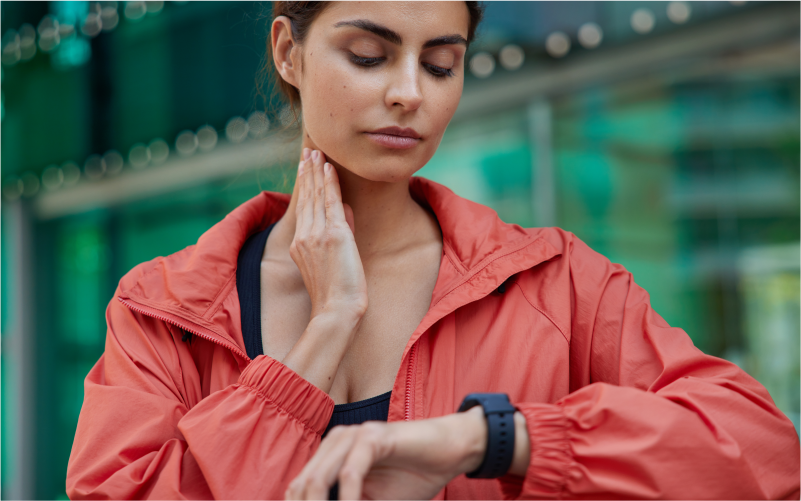Wearable Devices
Wearable devices have gained popularity in recent years due to advancements in technology and the growing interest in personal health and fitness monitoring. These devices are typically compact, lightweight, and designed to be comfortable for continuous wear. They connect wirelessly to smartphones or other devices, allowing users to access and analyze the collected data.

Types of Wearable Devices
Fitness Trackers: These devices monitor physical activities such as steps taken, distance traveled, calories burned, and sleep patterns. They often include features like heart rate monitoring, GPS tracking, and workout summaries.
Smartwatches: Smartwatches combine the functionalities of traditional watches with additional features like fitness tracking, message notifications, music control, and smartphone integration. They may also support app installations for extended capabilities.
Smart Clothing: Some wearable devices are integrated into clothing items, such as shirts, sports bras, or socks. These garments have embedded sensors to track metrics like heart rate, breathing rate, and muscle activity.
Health Monitoring Devices: There are wearables specifically designed for medical monitoring, such as continuous glucose monitors for diabetes management or heart rate monitors for cardiac patients. These devices provide critical health information for ongoing medical care.
Functionality and Data Collection
Wearable devices utilize various sensors and technologies to collect data, which can include:
Motion sensors: These sensors track movement, allowing devices to measure steps, distance, and calories burned.
Heart rate monitors: Optical sensors or electrodes detect the wearer’s heart rate and can provide insights into exercise intensity, resting heart rate, and recovery.
GPS tracking: Integrated GPS enables accurate tracking of outdoor activities like running, cycling, or hiking, providing data on route, distance, and pace.
Sleep trackers: Wearables with sleep monitoring capabilities track sleep patterns, including duration, quality, and stages of sleep.
Environmental sensors: Some wearables measure factors like temperature, humidity, or UV exposure to provide contextual information during outdoor activities.
Benefits and Considerations
Wearable devices offer several benefits:
Personal health monitoring: Wearables provide individuals with real-time data on their fitness levels, physical activities, sleep patterns, and vital signs, allowing them to make informed decisions about their health and lifestyle.
Motivation and accountability: Wearables can motivate users to engage in physical activity and set goals by providing feedback, achievements, and reminders.
Connectivity and convenience: Many wearables can sync with smartphones or other devices, allowing users to access their data, receive notifications, and connect with apps or online communities for social interaction or support.
Early detection and prevention: Some wearables can detect irregularities in heart rate, sleep patterns, or other health parameters, potentially alerting users to potential health issues.
However, there are considerations with wearable devices:
Data accuracy and reliability: While wearables have improved in accuracy, there can still be variations and limitations in data collection, particularly during intense physical activities or in specific environments.
Privacy and data security: Wearables collect personal data, and users should be aware of how their information is stored, used, and protected by device manufacturers or associated apps.
User dependence and behavioral impact: Relying solely on wearable data may overlook the importance of overall health management, including consulting healthcare professionals and considering other lifestyle factors.
Wearable devices have the potential to enhance personal health and fitness monitoring, providing users with valuable insights and motivation to maintain a healthy lifestyle. However, it’s important to choose reputable devices, interpret data responsibly, and remember that wearables are tools to support health and well-being, not a substitute for professional medical advice and care.







